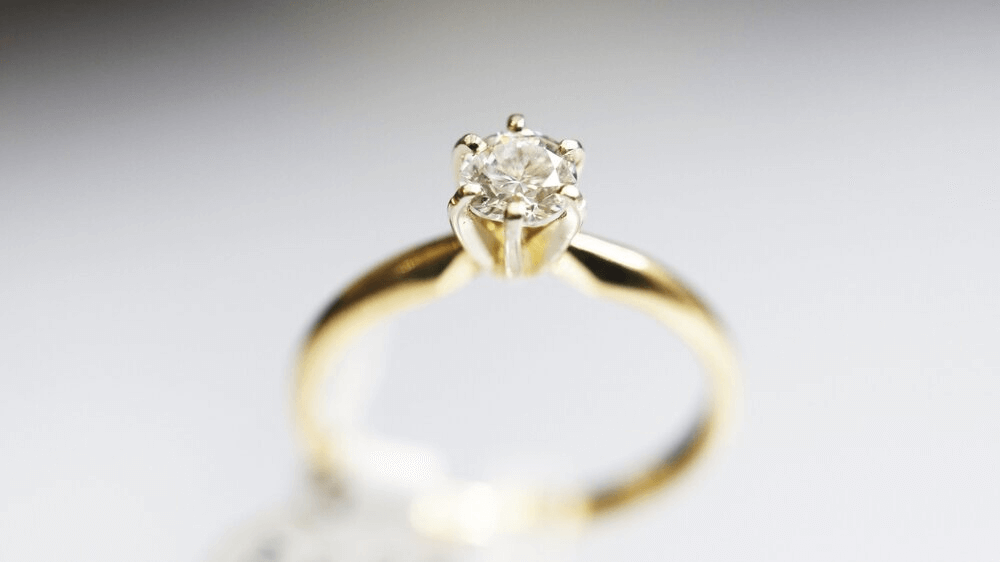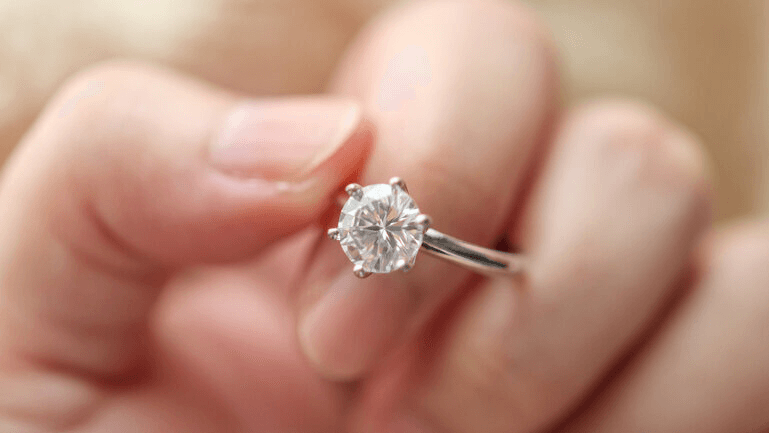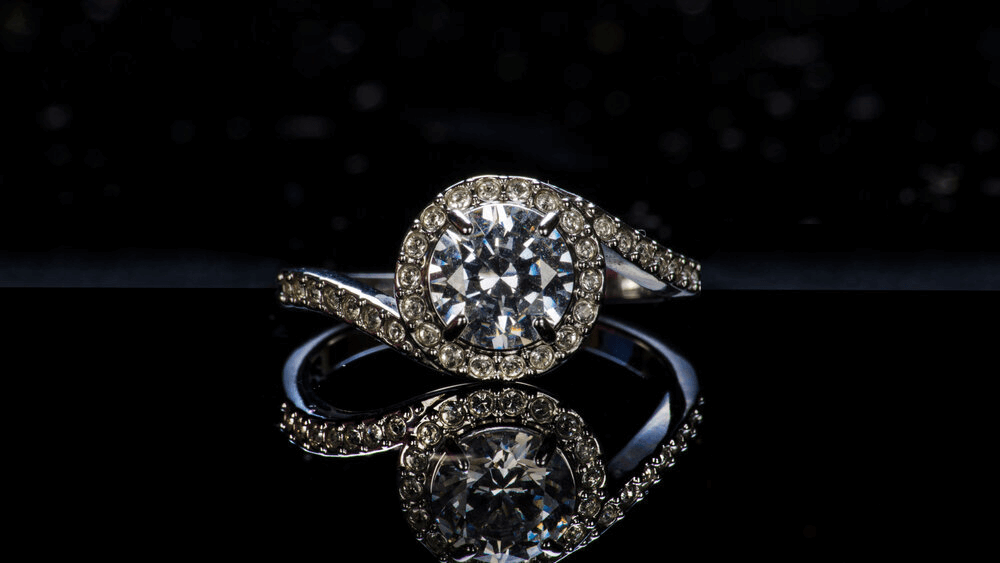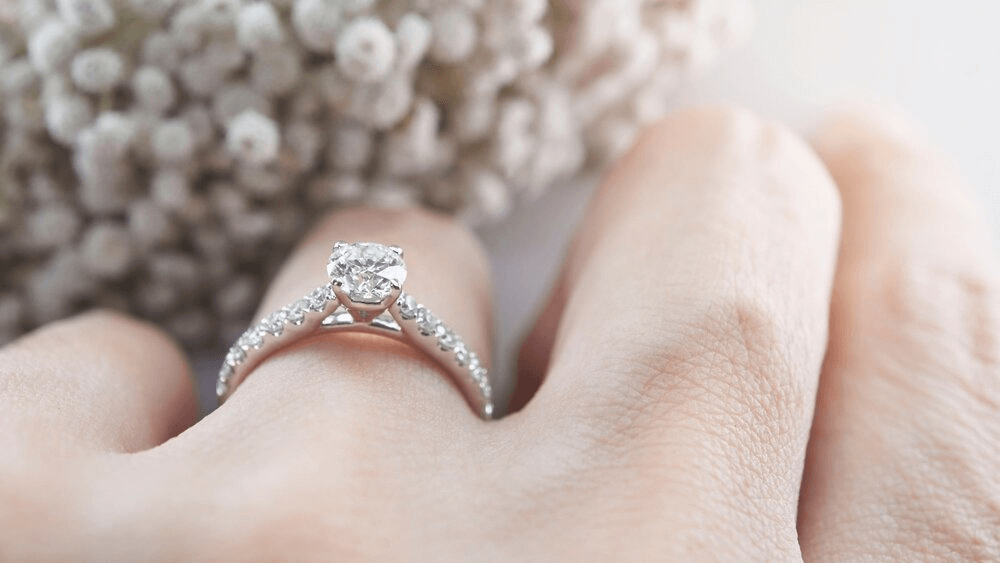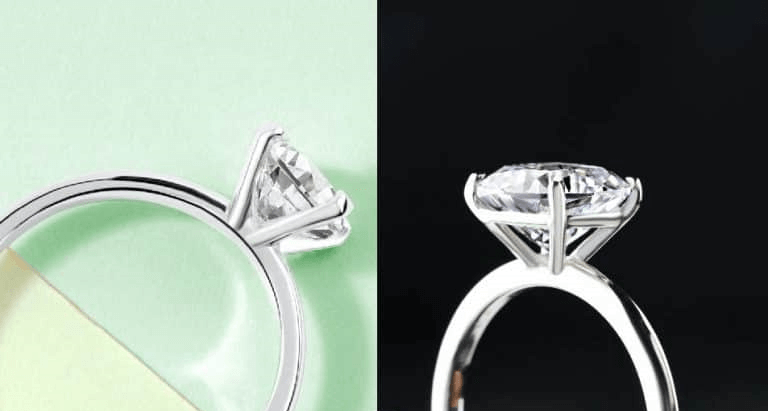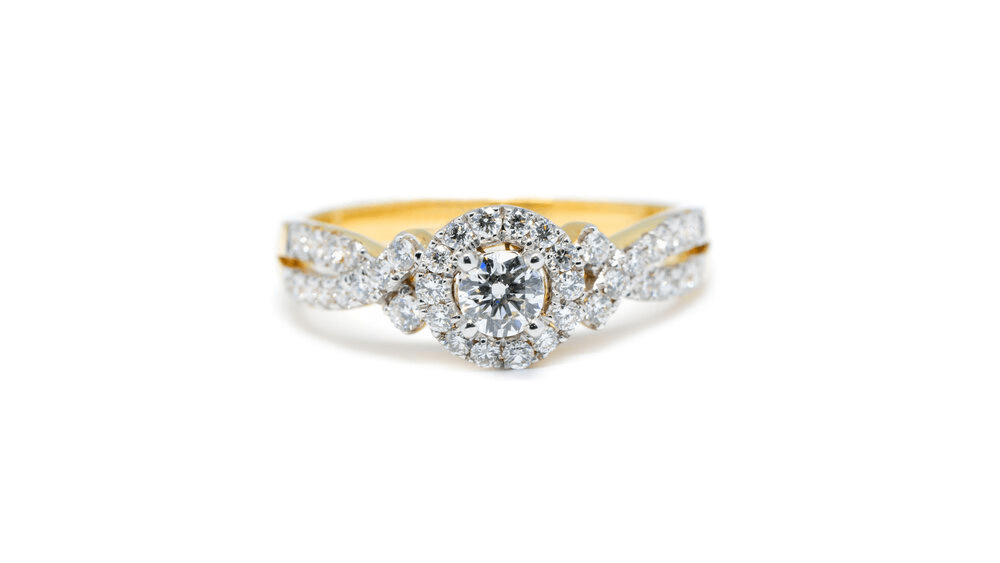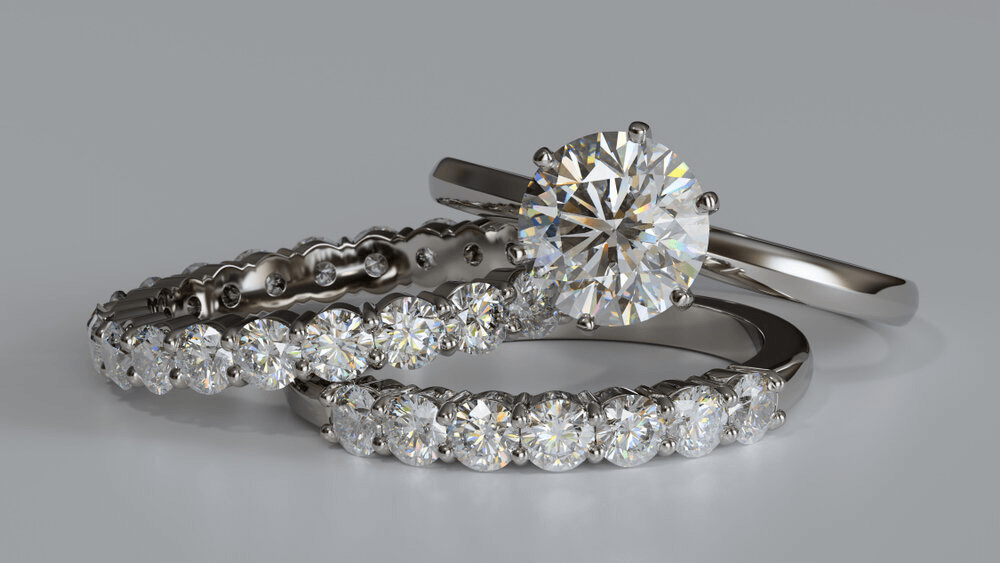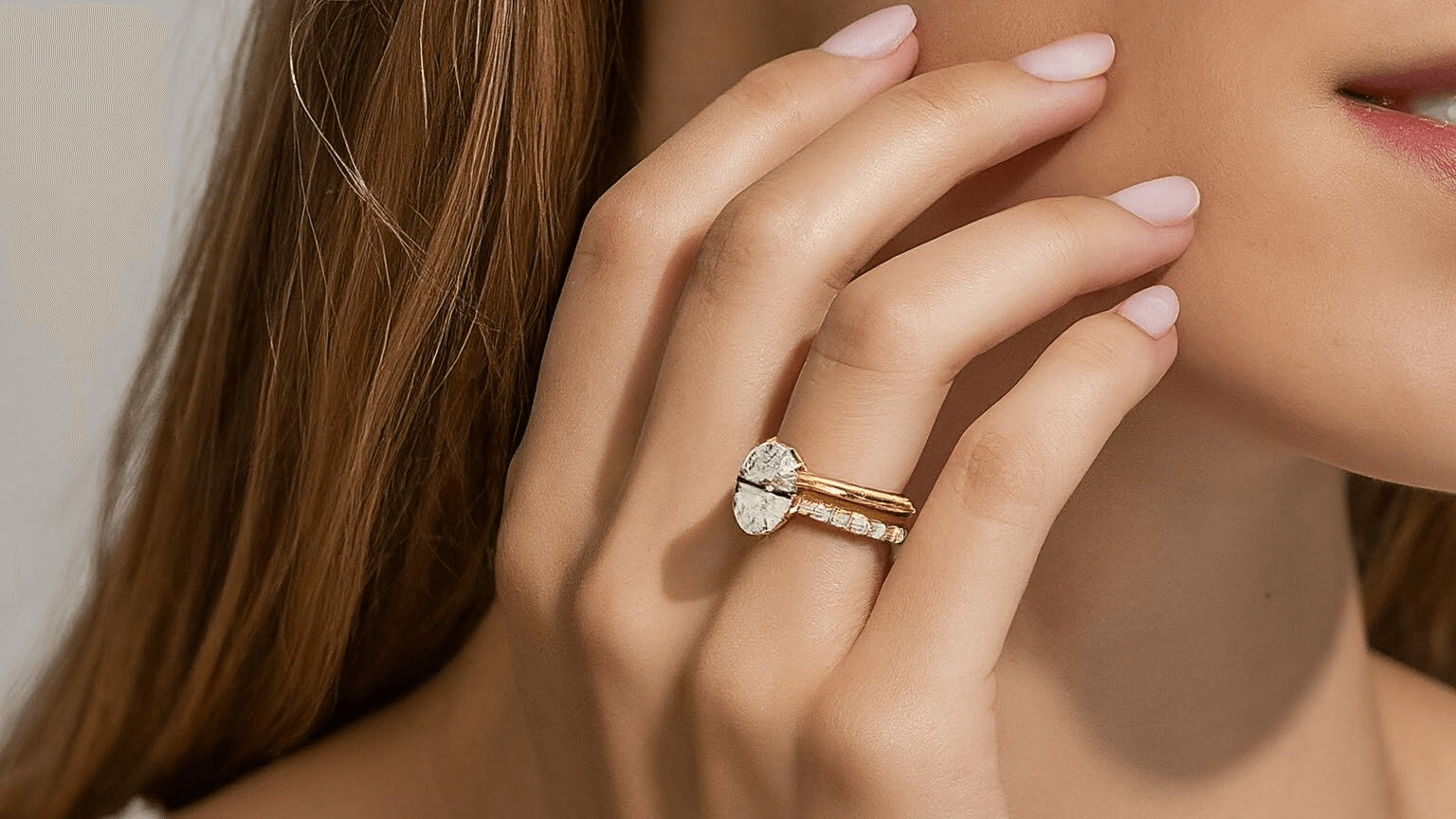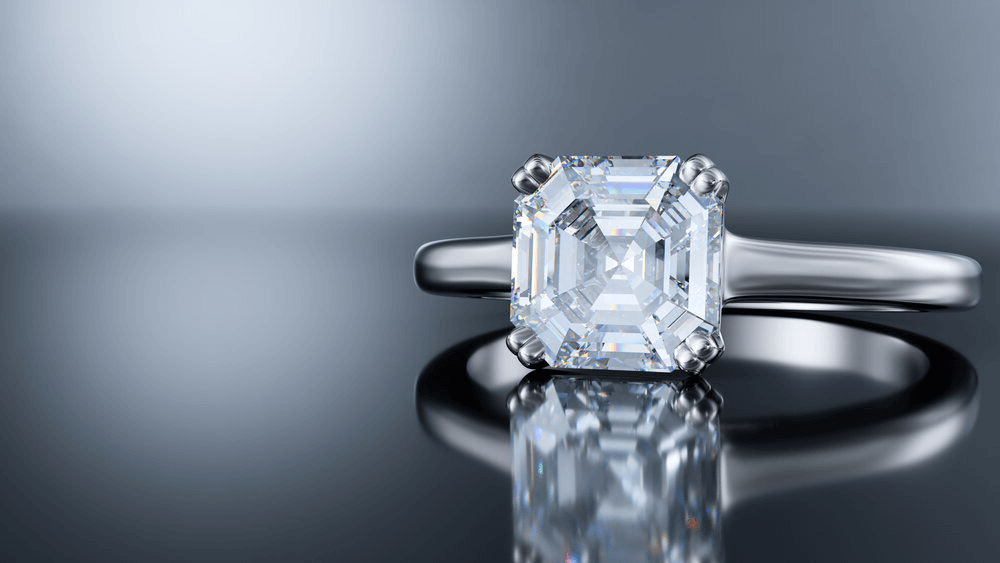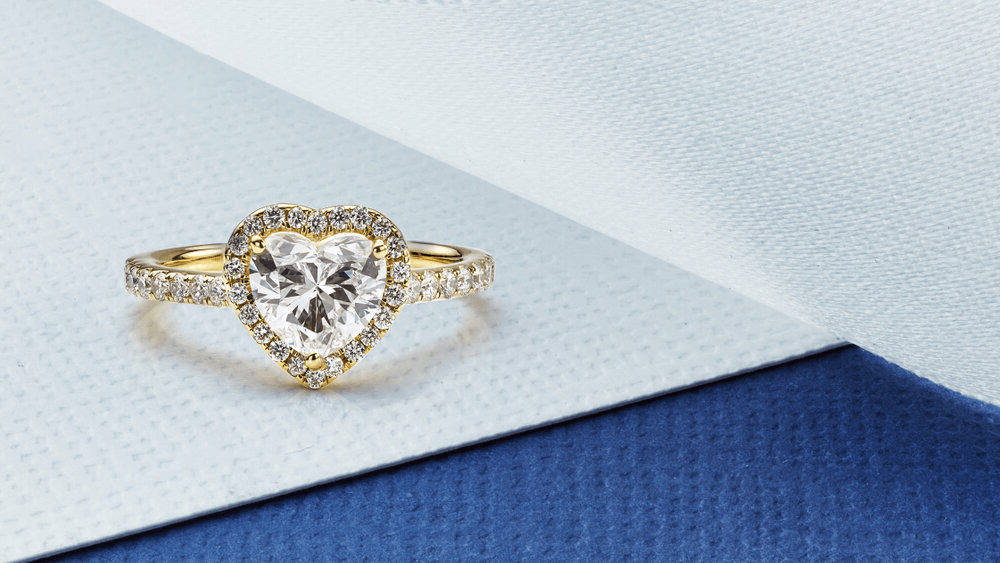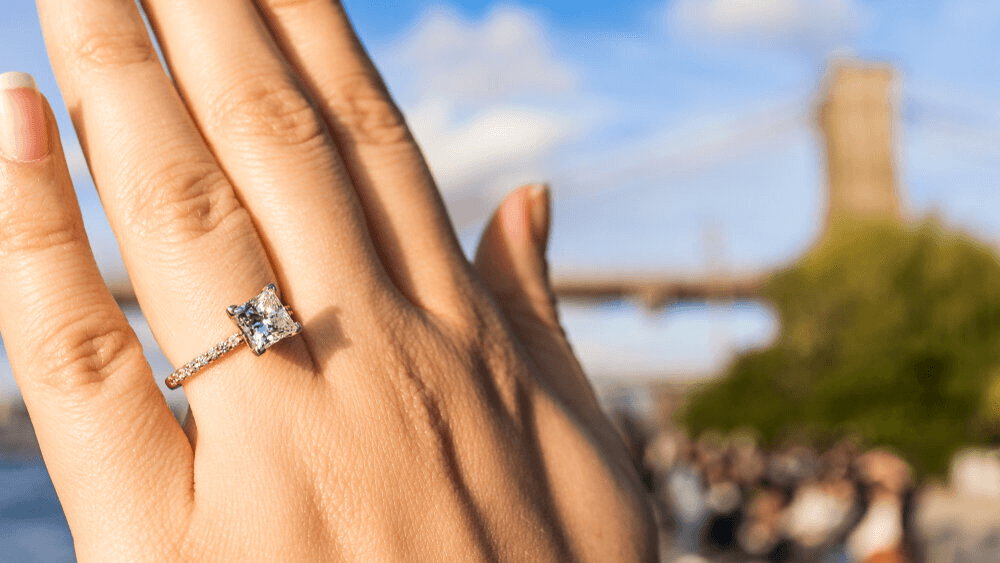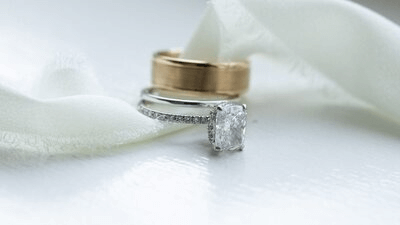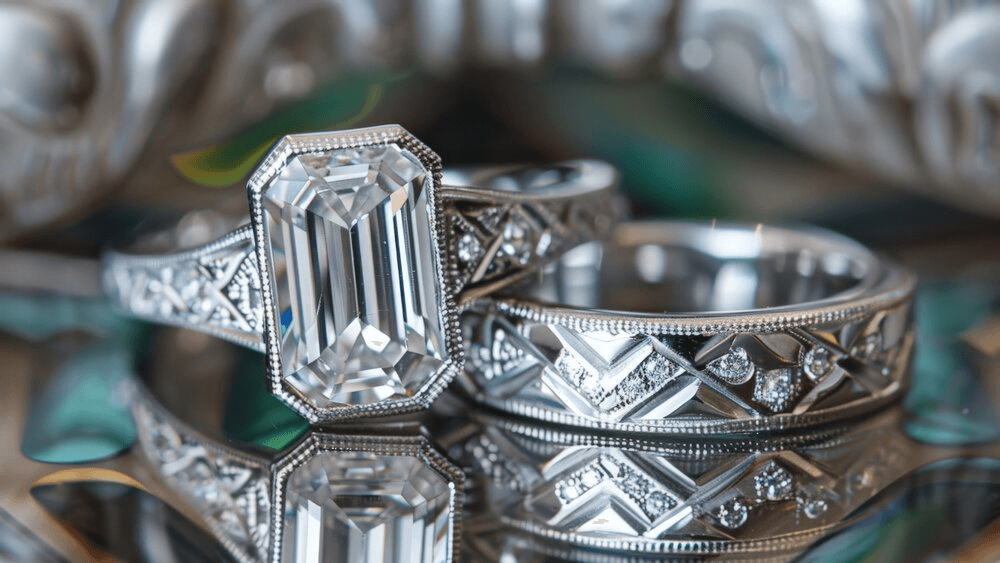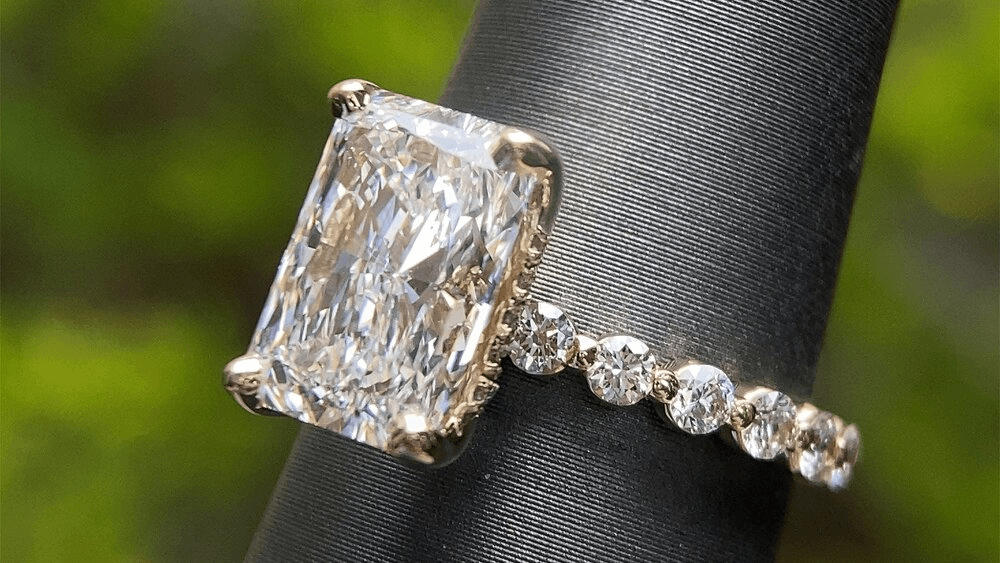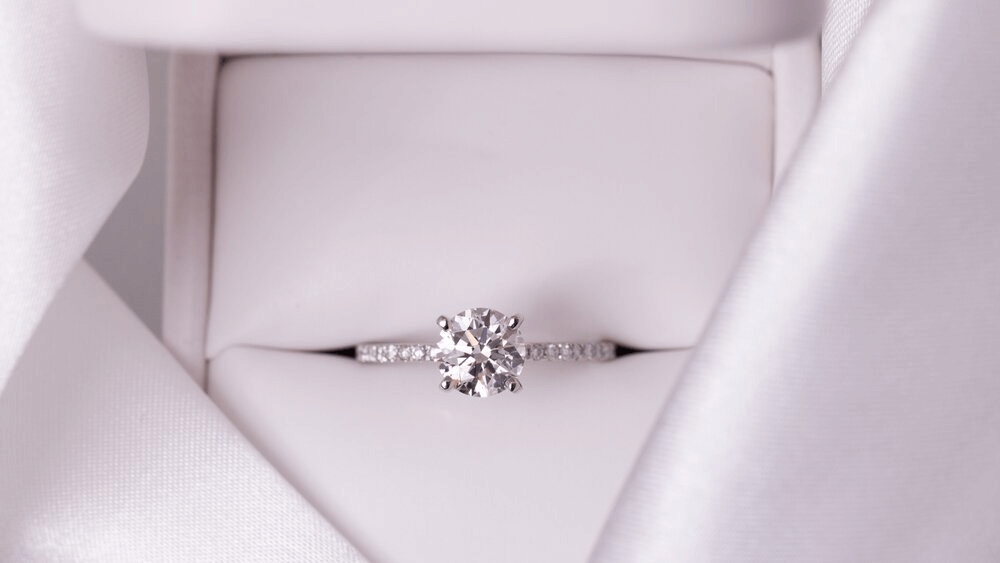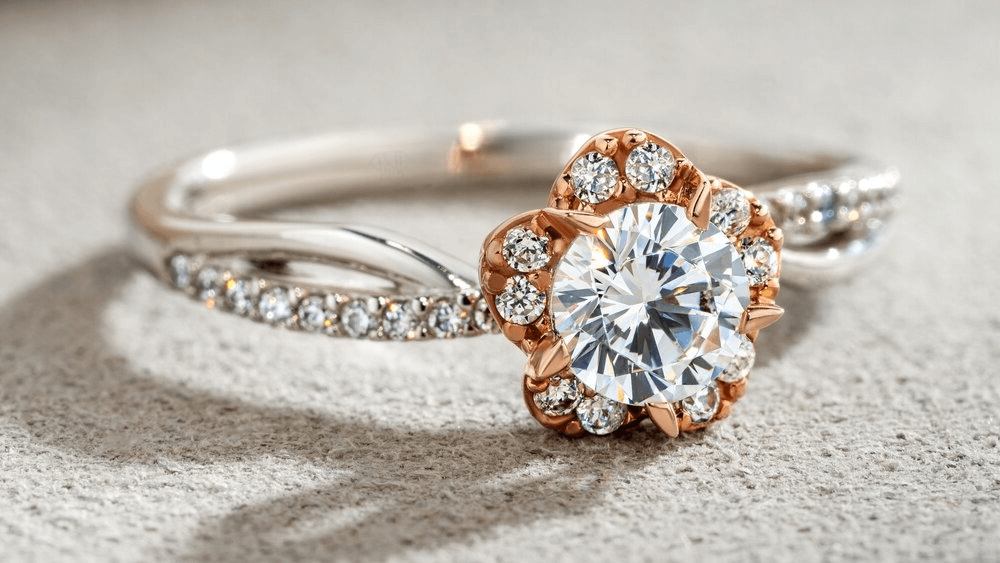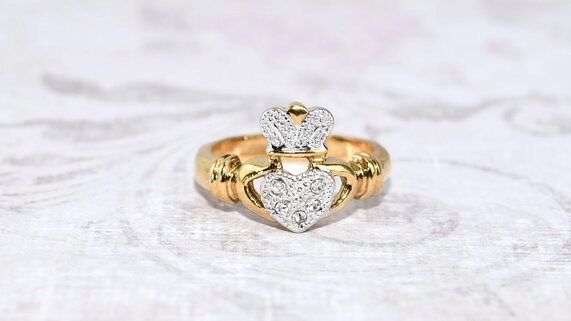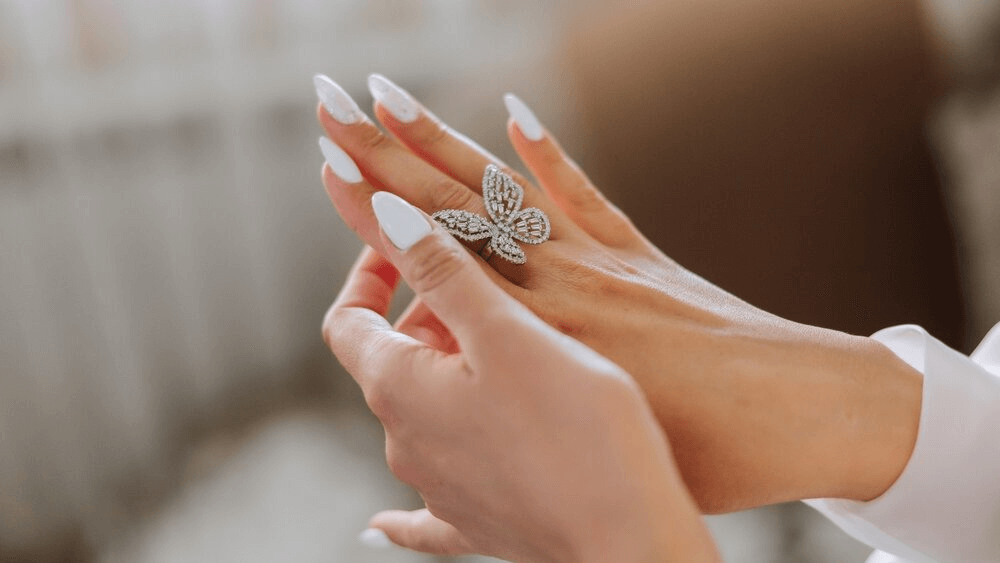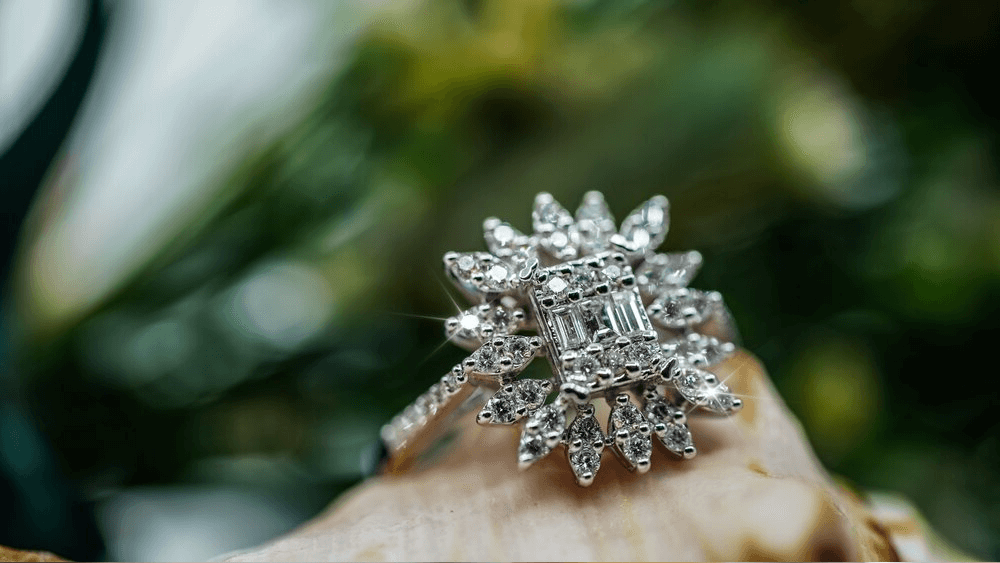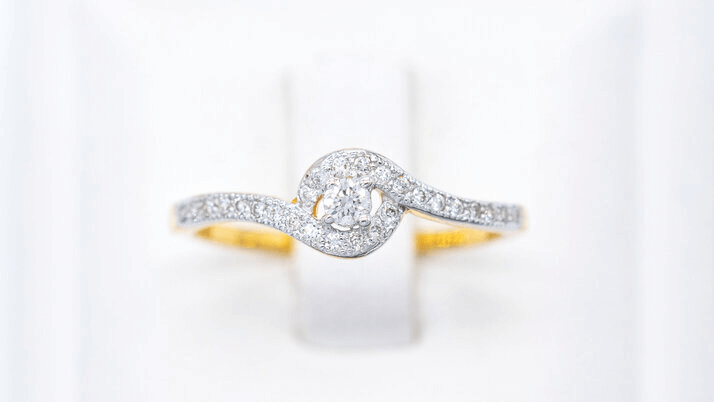Edwardian Diamond Ring Magic: Love Through Time

By Gary A.

Edited by Olivia H.
Published Aug 8, 2024
Edited on Mar 31, 2025
Edwardian engagement rings capture the charm of a bygone era, blending intricate craftsmanship with a timeless elegance that makes each piece uniquely romantic. Dive into our guide to uncover the allure of these exquisite rings.

Navigate This Guide:
- 7 Quick Tips for Choosing the Edwardian Engagement Ring of Your Dreams
- Introduction to Edwardian Engagement Rings
- The Edwardian Era: A Brief Overview
- The Signature Style of Edwardian Engagement Rings
- The Romance of Edwardian Ring Designs
- Investing in an Edwardian Engagement Ring
- Modern Adaptations of Edwardian Engagement Rings
- Our Expert Take
- 10 Frequently Asked Questions about Edwardian Engagement Rings
Before we dive deeper into the specifics, here are some practical tips to help guide your decision-making process:
7 Quick Tips for Choosing the Edwardian Engagement Ring of Your Dreams
- Tip 1. Verify Authenticity and Period Accuracy
- Check Hallmarks: Look for hallmarks on the ring, as genuine Edwardian pieces will often have them, revealing details about the metal type, origin, and jeweler.
- Design Era: Be knowledgeable about Edwardian design elements like milgrain detailing, filigree work, and common motifs of the era like bows, garlands, and flowers.
- Tip 2. Examine Stone Quality and Setting
- Diamond Quality: Pay attention to the 4Cs (Cut, Carat, Color, Clarity) of the diamond, ensuring that it aligns with the price and your expectations.
- Stone Security: Ensure that the stone, especially if it’s an Edwardian cut diamond, is securely set and there are no loose prongs or settings.
- Symmetry: Edwardian settings often have a symmetrical and harmonious design—ensure that the stones are evenly placed and settings are symmetrical.
- Tip 3. Ensure Ethical and Legal Sourcing
- Documentation: Request documentation verifying the authenticity and ethical sourcing of the stones and metals used in the engagement ring.
- Conflict-Free: Ensure that the diamond is conflict-free, adhering to the Kimberley Process or another verifiable standard.
- Tip 4. Respect Budget Without Sacrificing Quality
- Cost Management: Identify aspects that are non-negotiable (e.g., a specific metal or stone type) and areas where you might be willing to compromise to stick to your budget.
- Appraisals: Ensure the price aligns with an independent appraisal, guaranteeing you’re not paying above the market rate.
- Tip 5. Consider Future Maintenance and Care
- Durable Design: While Edwardian rings can be delicate, ensure the design is robust enough for daily wear (if that’s intended).
- Maintenance Plan: Understand what kind of maintenance might be necessary down the line, such as prong tightening or reshanking.
- Tip 6. Compatibility with Wedding Bands
- Matching Styles: Ensure the engagement ring will pair harmoniously with a wedding band, considering aspects like contour and overall design.
- Fit: Ensure the engagement ring and wedding band fit together well if they’re to be worn on the same finger.
- Tip 7. Get a Certified Appraisal and Insurance
- Valuation: Obtain a professional appraisal to know the exact value of the ring, particularly important for vintage pieces.
- Insurance: Once appraised, ensure you get the ring insured to protect your investment against potential loss, theft, or damage.
Now that you’ve got these practical tips, use Jeweler AI below to find the perfect engagement ring that suits your style and budget:
Introduction to Edwardian Engagement Rings
The Edwardians were a romantic bunch. Back in the days when James Waterhouse was painting heart-meltingly ethereal depictions of the Lady of Shallot, and artists, architects, and designers all over the western world were pioneering the beauty that is art nouveau, we can imagine it was pretty easy to develop an exacting taste for all things romantic. Sure, life was only rarely as splendid as it appears in Fragonard’s The Swing – but, hey, we like to dream.
It should come as no surprise then, that Edwardian rings remain one of the most popular choices for engagement ring shoppers looking to choose something a little more time honoured. While the engagement rings of the mid-century offer plenty of appeal in terms of geometry and quality finishes, stepping a little further back in time opens the door to a world of trailing vines, vibrant colors, floral motifs, romantic finishing touches, and, of course, beautiful diamonds.
Then again, there are some pros and cons to choosing an Edwardian engagement ring that you need to be aware of. Everything you need to know, we run through below.
The Edwardian Era: A Brief Overview
The Edwardian era represents a very brief period of time at the beginning of the 20th century.
The Victorian era was long and filled with social, cultural, and political revolutions under the reign of Queen Victoria, who held the throne for more than 60 years. After her death, the next to be crowned was Edward VII and, accordingly, the Victorian era became the Edwardian era.
Sadly, King Edward VII only held the throne for 9 years. The Edwardian era would quickly give way to the Modern Era, with periods of human history no longer labelled by changes to the British monarchy.
The Signature Style of Edwardian Engagement Rings
While, by the Edwardian era, the industrial revolution was changing the face of the world – and as a result the ways in which poets, artists, fashion designers, and jewellers represented beauty – vestiges of the Victorian., and its love for romantic symbolism, still lingered. Edwardian engagement rings still encapsulate that intense, burning passion that we tend to associate with the Victorians, and their fine jewelry.
However, there are some distinguishing characteristics that may tip you toward one era or the other.
Distinct Characteristics That Define Edwardian Rings
Edwardian rings were among the first to set the standard for modern day engagement rings. While the Victorians held a strong preference for vibrant, colorful gemstones that created visually stunning pieces capable of flaunting wealth, status, and a true appreciation for the finer things in life, Edwardian styles were slightly more reserved. Then again, we can’t really call the Edwardians growing adoration of diamond ‘reserved’, but the crisp, clear, bright whiteness of diamond represents a real benchmark of the Edwardian era.
So, Edwardian rings were slightly more understated in terms of color – but not sparkle or value.
The Artistry of Edwardian Ring Settings
Even with the changing times, the popularity of floral motifs, delicate details resembling work fashioned from the metal, and fine craftmanship persevered. We still see a lot of art nouveau reflected in rings from the area, along with a more refined approach thanks to new tools and techniques that early Victorians didn’t have available to them.
When browsing Edwardian rings, expect to see exquisite settings. What the era lacks in terms of simple solitaires, it more than makes up for in terms of filigree, milgrain, mixed metals, halo and flower settings, fine engraving and unexpected silhouettes.
True, if your partner prefers a simpler palette, the Edwardian era may not be for them – but, for those of us that favour long, poetic declarations of love to simple statements, boudoirs draped in velvet and candlelight, and Picasso to Hirst…well, you’re in the right place.
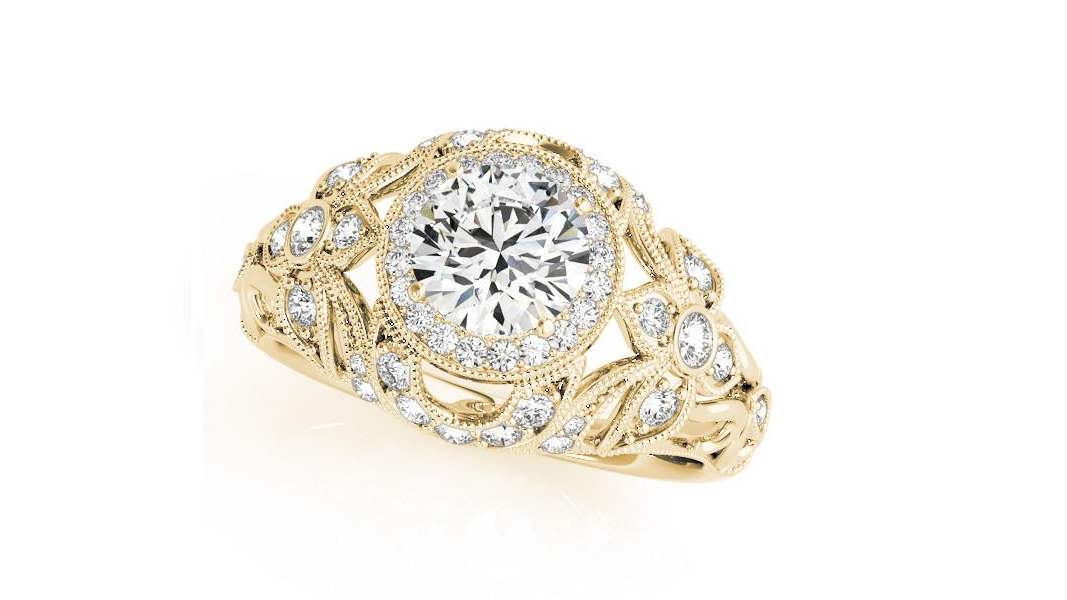
The Romance of Edwardian Ring Designs
What does romance look like? Roses? Chocolates? A slow tango in front of the Eiffel Tower? Or how about delicate twists of metal that appear almost too delicate to hold a diamond (and decades of commitment), diamonds that erupt with brilliance in candlelight, and unique designs that reflect the unique love they represent?
Are you swooning yet?
Here are some of the techniques you’ll want to familiarise yourself with if an Edwardian ring is the one for you.
Filigree Work: The Heart of Edwardian Elegance
Filigree is a complex technique that creates very fine, delicate metalwork for jewelry. The results often resemble lace or latticework, with a lot of organic shapes, floral motifs, trailing lines and twisted pieces. It takes a lot of skill to get perfect, and the results are often unique as a result of the
The Role of Diamonds and Sapphires
As we mentioned above, the Edwardian era was really a turning point for diamond. While plenty of generations had been charmed by its unique properties before, diamonds were still very limited – as were the techniques needed to cut them into perfect, highly refractive shapes.
So, diamond plays the starring role – but, by the early 20th century, the fashion for richly colored gemstones hadn’t died-out completely. Sapphires, with their sultry, depthless blue, were among the most popular accents for diamonds.
Three-stone engagement rings are perfect for integrating diamond with other gemstones, without detracting from the diamond as the ring’s main focus. Then again, remember that other gemstones – sapphire included – are significantly weaker than diamond. It’s better to opt for fancy color diamonds, which are just as vibrant but much stronger – if you can spare the extra spend, that is.
Investing in an Edwardian Engagement Ring
This is where it gets a little tricky. Genuine engagement rings aren’t always the best investments, since they feature diamonds mined during a darker period for the diamond mining industry, with a great deal of corruption and exploitation. While buying an Edwardian engagement ring – or any engagement ring dating back to before 1990 – won’t contribute to these illicit practices, a lot of people are understandably reluctant to wear something with such a dark history.
You can take a look at our full guide to buying vintage engagement rings here.
Modern Adaptations of Edwardian Engagement Rings
While the Edwardian era was relatively brief, it has made a lasting mark on the world of fine jewelry. Very few eras have mastered romance and artistry better than the Edwardians – and, when you’re browsing vintage-inspired styles, that much is self-evident.
Blending Vintage Charm with Contemporary Style
The great news about choosing a modern, Edwardian inspired engagement ring is you get a lot more choice, higher-quality finishes – and, of course, access to some of the modern diamond cuts. The Round Brilliant, Princess, and Radiant are all examples of diamond cuts perfected much later than the Edwardian period, so you won’t find any of them (or their gorgeous light performances) in vintage rings.
But not a lot of people know the history of every diamond shape. So, if you opt for a Round Brilliant and pair it with an Edwardian-inspired ring setting, it won’t look out of place.
Then again, if you really want to embrace history, you could opt for a vintage cut like the Rose, Marquise, Cushion or Emerald.
Consider pairing a more delicate, art nouveau style of design with a bright, dazzling metal like platinum, or something really indulgent like rose gold. It’ll add a modern edge, while still encapsulating the elements that make Edwardian jewelry so seductive.
Customization: Making Your Edwardian Ring Unique
And what Edwardian-style ring would be complete without some engraving? The generation were all about romantic words, nostalgia for key dates, and making things unique to themselves. From short quotes to initials, engraving something that you can keep between the two of you onto the inner or outer band is a sure way to make knees weak.
Read more about engagement ring engraving here.
Our Expert Take
If you’re planning a proposal, then taking a leaf out of the Edwardians’ ‘Declarations of love’ book is never the wrong move. Keep in mind that the Edwardians certainly didn’t shy away from maximalism, and that, these days, with the solitaire proving so popular among modern audiences, some people prefer a subtler, less ostentatious design for their ring.
Think about your partner, what they like to wear, and what you think will represent your unique love for one another better than anything else.
10 Frequently Asked Questions about Edwardian Engagement Rings
- Q: What defines an Edwardian engagement ring?
- A: Edwardian engagement rings are characterized by intricate designs, including filigree work, milgrain detailing, and floral motifs, often made from platinum and featuring diamonds and sapphires.
- Q: How can I tell if an Edwardian engagement ring is authentic?
- A: Check for hallmarks indicating the metal’s purity and the jeweler’s mark, and assess the design features typical of the Edwardian era, such as delicate filigree and lace-like patterns.
- Q: Why are Edwardian engagement rings so popular?
- A: Their popularity stems from their exquisite craftsmanship, timeless elegance, and the romantic allure of vintage jewelry, which many find unique and meaningful.
- Q: Are Edwardian engagement rings suitable for daily wear?
- A: While Edwardian rings are known for their delicate designs, with proper care and occasional maintenance, they can be suitable for daily wear. It’s important to protect them from harsh chemicals and physical impact.
- Q: Can I customize an Edwardian engagement ring?
- A: Yes, many jewelers offer Edwardian-inspired designs that can be customized to your preferences, including the choice of metal, gemstones, and specific design elements.
- Q: What types of gemstones are commonly found in Edwardian engagement rings?
- A: Diamonds and sapphires are the most common, but pearls, rubies, and emeralds are also frequently used, reflecting the period’s love for luxurious and colorful gemstones.
- Q: How do I care for an Edwardian engagement ring?
- A: Regular gentle cleaning with mild soap and water, avoiding harsh chemicals, and removing the ring during heavy physical activities can help preserve its beauty.
- Q: Are Edwardian engagement rings more expensive than modern rings?
- A: The price can vary widely based on factors like authenticity, materials, craftsmanship, and gemstone quality. Authentic vintage Edwardian rings might be priced higher due to their historical value and rarity.
- Q: Where can I purchase an Edwardian engagement ring?
- A: Edwardian engagement rings can be found at antique jewelry shops, auctions, specialized online retailers, and some jewelers who create reproductions or Edwardian-inspired designs.
- Q: Is it ethical to buy an Edwardian engagement ring?
- A: Many Edwardian rings are considered ethical as they are vintage, making them an eco-friendly choice. However, it’s important to inquire about the gemstone’s origins if that’s a concern for you.
Discover your dream Edwardian engagement ring with Jeweler AI – where vintage meets precision.
FOLLOW-UP GUIDE SERIES





